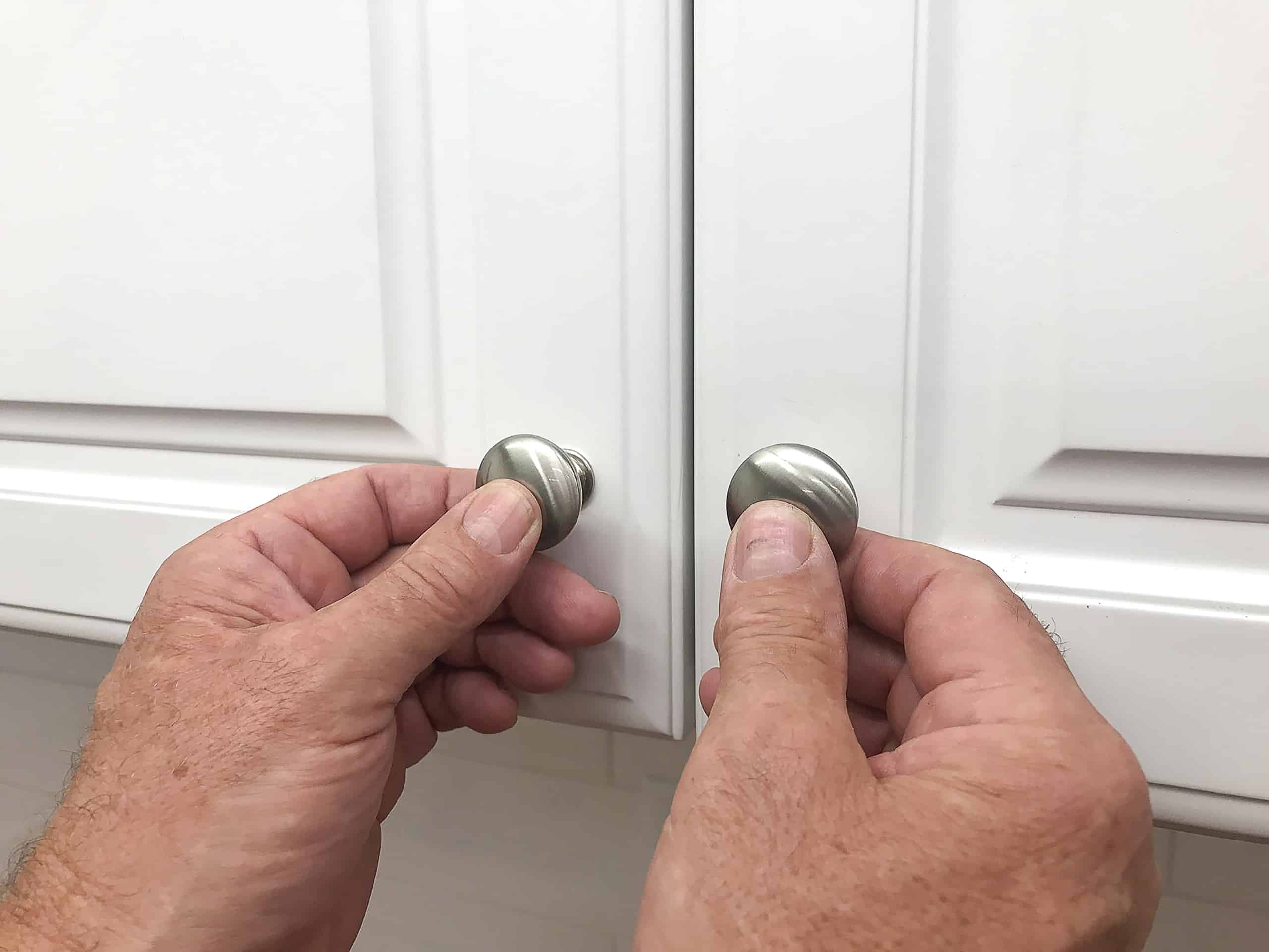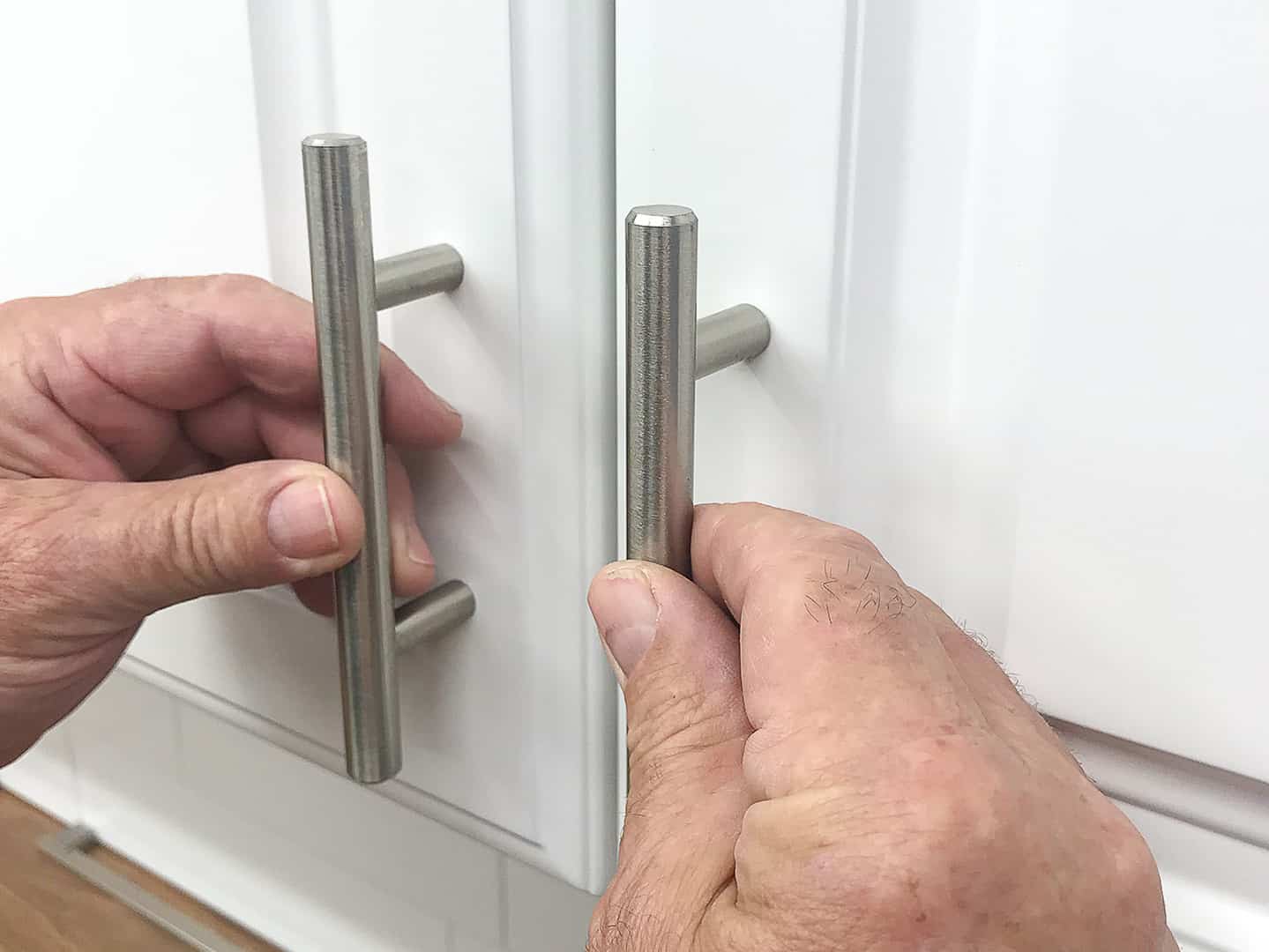Choosing the Right Handles

The handles you choose for your cabinets can have a huge impact on their look and feel. From classic knobs to sleek pulls, there’s a wide range of options to suit every style and preference. But with so many choices, how do you pick the right ones?
Types of Cabinet Door Handles
The most common types of cabinet door handles are:
- Knobs: These are round or square handles that are typically mounted in the center of the door. They’re a classic choice that can add a touch of elegance to any kitchen. They’re often found in traditional and farmhouse-style kitchens.
- Pulls: These are long, narrow handles that are mounted horizontally on the door. They’re a popular choice for modern and contemporary kitchens, as they offer a sleek and minimalist look. Pulls can be found in various lengths and styles, from simple bar pulls to more elaborate designs.
- Bar Handles: These are similar to pulls, but they’re typically shorter and thicker. They’re a good choice for doors that are frequently used, as they provide a good grip.
Selecting Handles Based on Cabinet Style
The style of your cabinets should be a primary factor in your handle selection. For example:
- Traditional cabinets often pair well with classic knobs or pulls with ornate details.
- Modern cabinets typically look best with sleek, minimalist pulls or bar handles.
- Rustic cabinets can be accented with handles made from natural materials like wood or metal with a distressed finish.
Selecting Handles Based on Door Material
The material of your cabinet doors will also influence your handle selection.
- Wood doors can accommodate a wide range of handle styles, from traditional knobs to modern pulls.
- Glass doors are best suited for handles with a minimalist design, such as bar pulls or small, discreet knobs.
- Metal doors can handle heavier handles, such as large pulls or bar handles.
The Importance of Handle Size and Placement
The size and placement of your cabinet handles are crucial for ergonomic use.
- Handle size should be comfortable to grip, allowing for easy opening and closing of the doors.
- Handle placement should be in a position that is easily accessible, without requiring awkward reaching or straining.
Matching Handle Finishes
The finish of your cabinet handles should complement the other hardware in your kitchen, such as faucets, light fixtures, and appliances.
- Matching finishes create a cohesive and polished look.
- Contrasting finishes can add a touch of interest and personality.
Preparing for Installation: Putting Handles On Cabinet Doors

Before you start drilling and screwing, take a moment to gather your tools and prepare your cabinet doors. This will ensure a smooth and accurate installation process.
Gathering the Necessary Tools
Having the right tools at hand makes the job much easier and less frustrating. Here’s a list of essential tools for installing cabinet door handles:
- Drill: A cordless drill with adjustable torque settings is ideal for drilling pilot holes and securing screws.
- Screwdriver: A Phillips-head screwdriver is commonly used for cabinet handle screws.
- Measuring Tape: A measuring tape is crucial for accurate placement of the handles.
- Pencil: A pencil is used to mark the handle locations on the cabinet doors.
- Level: A level ensures that the handles are installed horizontally and straight.
Marking Handle Locations, Putting handles on cabinet doors
Precise placement is key to a professional-looking installation. Here’s how to mark the handle locations:
- Determine the handle height: Decide on the desired height for your handles. A common placement is about 32 inches from the floor, but this can vary based on your preference and the height of your cabinets.
- Measure and mark: Use the measuring tape to mark the handle locations on both sides of the cabinet door. Make sure the marks are level and consistent.
- Consider handle spacing: For multiple handles, ensure proper spacing between them. Consult the manufacturer’s instructions for recommended spacing.
Pre-Drilling Holes for Screws
Pre-drilling holes before inserting screws helps prevent splitting the cabinet door. Here’s how to do it:
- Choose the right drill bit: Select a drill bit slightly smaller than the diameter of the screw.
- Drill pilot holes: Drill pilot holes at the marked locations. The depth of the pilot holes should be slightly less than the length of the screw.
- Align the holes: Ensure the pilot holes on both sides of the door are perfectly aligned.
Protecting Cabinet Doors
It’s important to protect your cabinet doors from damage during the installation process.
“Always use a piece of scrap wood or a protective pad under the drill bit to prevent scratching or marring the cabinet door surface.”
- Use a protective pad: Place a piece of scrap wood or a protective pad under the drill bit to prevent scratching or marring the cabinet door surface.
- Avoid excessive force: Don’t overtighten the screws. Overtightening can strip the screw holes or damage the cabinet door.
Installing the Handles

Now that you’ve chosen your handles and prepped your cabinet doors, it’s time to install them! This process is relatively straightforward, but there are a few key steps to ensure a secure and aesthetically pleasing installation.
Installing the Handles
The first step is to mark the location of the handle on the cabinet door. This is where the handle will be mounted. Using a pencil, mark the center point of where you want the handle to be. Then, use a drill to create a pilot hole for each screw. The pilot hole should be slightly smaller than the screw diameter. This will help to prevent the wood from splitting when you screw in the handle.
- Position the Handle: Place the handle on the door at the marked center point, ensuring it is level and straight.
- Pre-Drill Holes: Using a drill bit slightly smaller than the screw diameter, pre-drill holes for each screw. This prevents the wood from splitting when you screw in the handle.
- Secure the Handle: Insert the screws through the handle and into the pre-drilled holes. Tighten the screws securely, but avoid over-tightening as this could damage the wood or handle.
Addressing Potential Issues
Sometimes, you may encounter uneven surfaces or misaligned holes during installation. Here’s how to address these issues:
- Uneven Surfaces: If the surface of the cabinet door is uneven, you can use a shim to level the handle. A shim is a thin piece of material that can be used to fill in gaps. Place the shim under the handle and then tighten the screws.
- Misaligned Holes: If the holes are misaligned, you can use a drill bit to enlarge the existing holes or create new ones. Be careful not to enlarge the holes too much, as this could weaken the handle.
Maintaining and Cleaning Handles
Once your handles are installed, you’ll want to keep them looking their best.
- Regular Cleaning: Wipe down your handles with a damp cloth and mild soap regularly to remove dirt and grime. Avoid using harsh chemicals or abrasive cleaners, as these can damage the finish.
- Lubrication: If your handles have moving parts, such as a lever or knob, you can lubricate them with a light oil to keep them moving smoothly.
Putting handles on cabinet doors is a simple task that can instantly elevate the look of your space. Imagine the elegant touch of brushed nickel handles against a backdrop of teal gold and grey bedroom decor, adding a touch of sophistication and functionality to your bedroom.
The right handles can transform your cabinets from ordinary to extraordinary, reflecting your personal style and creating a space that truly feels like home.
Adding handles to cabinet doors is a simple way to elevate your space. If you’re going for a bold, energetic look, consider incorporating elements of rock n roll bedroom decor into your design. Think about using edgy materials like metal or leather, or adding a touch of rebellious flair with studs or spikes.
No matter your style, the right handles can add a touch of personality and practicality to your cabinets.
